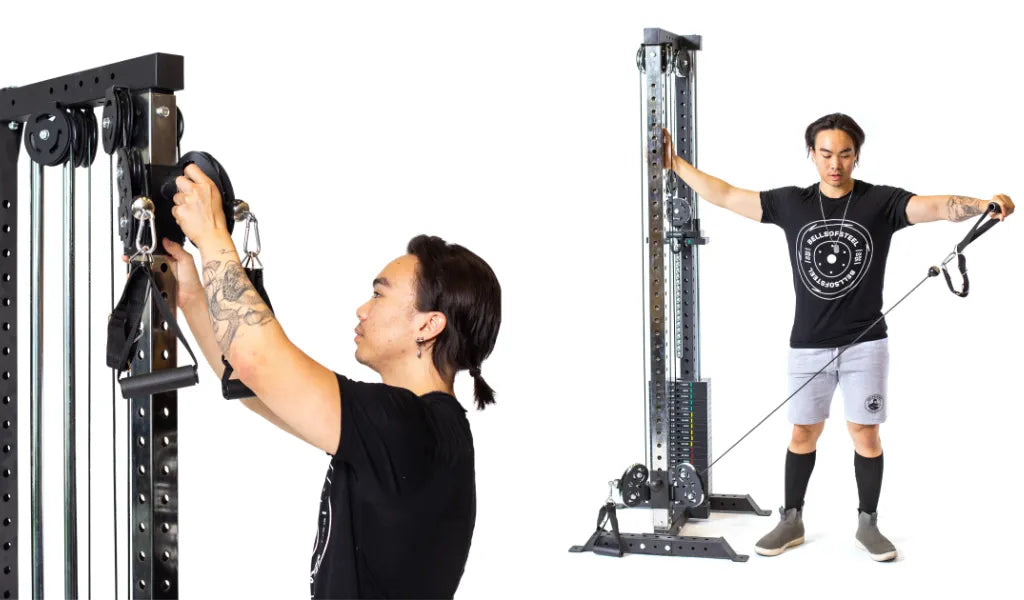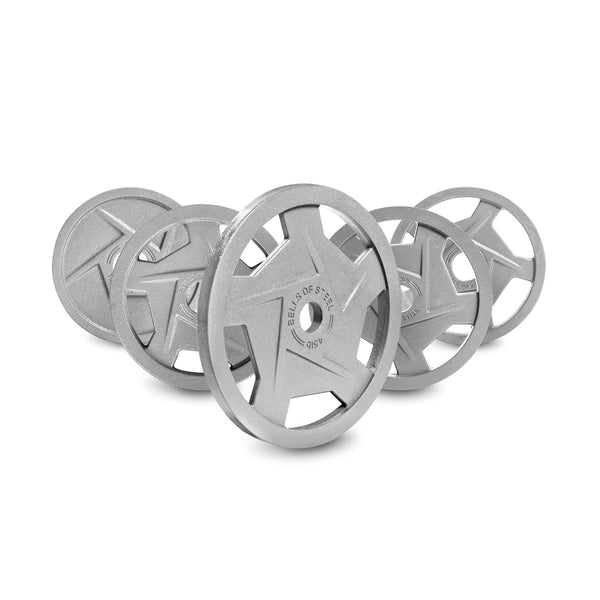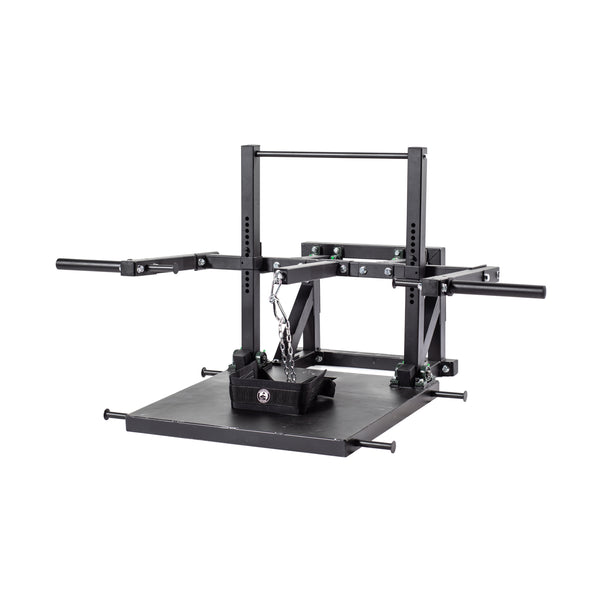Pulley systems are like the secret sauce of any good strength training setup. Whether you're building a home gym or adding to your arsenal, you’ve likely stumbled across high and low pulley attachments. But what’s the difference between the two? Are you missing out if you only have one? And is there really any reason to fork out for a machine that has both?
Spoiler alert: Yes, there is. But we’ll get into that later.
Let’s break down the differences between high and low pulley attachments, their benefits, and why getting a setup with both (like the Bells of Steel cable tower with 33 height settings and dual handles) might just be your new best friend in the gym.
High Pulley Attachments: The King of Upper Body Domination
High pulley attachments are typically mounted at the top of a machine and are used for exercises that pull from above your head down toward your torso. Think about lat pulldowns, triceps pushdowns, and cable face pulls—classic high-pulley moves that target your upper body with some serious precision.
Benefits of High Pulley Attachments
- Upper Body Focus: If you’re chasing a wider back, stronger shoulders, and horseshoe triceps, the high pulley is where the magic happens. These moves are your go-to for building that V-taper look.
- Range of Motion: High pulleys are great for extending your range of motion. Exercises like cable crunches or pulldowns allow you to stretch and engage muscles across a longer distance, activating a larger portion of the muscle.
- Core Engagement: Don’t sleep on the core benefits! Many high pulley exercises require you to stabilize yourself while pulling, especially if you’re standing up. That means your core is working just as hard as your upper body.
Best High Pulley Exercises:
- Lat pulldowns
- Triceps pushdowns
- Face pulls
- Cable crunches
Pro tip: For any home gym setup, having a high pulley attachment is essential for upper body development. But let’s not forget its partner in crime—the low pulley.
Low Pulley Attachments: The Unsung Hero of Lower Body Gains
Low pulley attachments sit, as you’d expect, near the bottom of your cable setup. They’re typically used for pulling exercises that move from a low position upward, like seated rows or bicep curls. But low pulleys can also step up for leg day, making them a versatile addition to any strength program.
Benefits of Low Pulley Attachments
- Lower Body Love: Low pulleys aren’t just about rows and curls; they’re perfect for cable leg exercises too. Cable pull-throughs, standing cable leg curls, and even cable squats become an option with a low pulley setup.
- Biceps and Back Boosters: Low pulley rows and curls allow you to hit your biceps and back in a different way than high pulleys. The seated row, for example, helps you isolate your lats and rhomboids in a more controlled and direct manner than a standing lat pulldown.
- Core and Stability: Similar to high pulleys, low pulley movements require you to stabilize yourself, especially when you’re standing. That means your legs and core get a nice workout, too.
Best Low Pulley Exercises:
- Seated rows
- Bicep curls
- Cable pull-throughs
- Standing leg curls
Pro tip: Don’t ignore the low pulley! It’s easy to focus on the high pulley for upper body moves, but the low pulley offers tons of lower body and core benefits as well.
Why Both High and Low Pulleys Are Better Together
Why settle for one when you can have both? Combining high and low pulley attachments creates a powerhouse of a workout station. You’ll be able to target more muscles, tackle a broader variety of exercises, and ultimately get more bang for your buck.
If you’re looking for a killer setup, Bells of Steel’s cable tower with 33 height settings and dual handles gives you the ultimate in versatility. With high and low pulleys, plus the ability to adjust to different heights, you’re not just buying equipment—you’re unlocking a whole new world of exercise options.
Key Benefits of a Dual Pulley System
- More Exercise Variety: With high and low pulleys, you can seamlessly transition from lat pulldowns to seated rows to cable crunches, all in the same workout. No need to awkwardly swap attachments or use multiple machines.
- Space Efficiency: For home gym owners, space is often at a premium. A system that offers both high and low pulley options in one compact setup saves you room while still giving you access to a full range of exercises.
- Progressive Overload: Having access to both high and low pulleys means you can hit muscles from different angles, which is key for achieving progressive overload—one of the main principles for muscle growth.
FAQs About High and Low Pulley Attachments
1. Which pulley is better for beginners?
Both are great for beginners, but if you’re just starting out, you might find yourself using the high pulley more often for basic exercises like lat pulldowns and tricep pushdowns. That being said, adding a low pulley into your routine early on will help you build a more well-rounded strength base.
2. Can I get away with just one pulley?
Sure, but why would you want to? If space and budget allow, get a setup that offers both high and low pulley options. You’ll unlock way more exercises and target a greater range of muscles.
3. What should I look for in a pulley system?
Look for something with multiple height settings, like the Bells of Steel cable tower. Being able to adjust the height gives you even more exercise options, allowing you to hit your muscles from different angles and levels of resistance.
Conclusion: Why Settle for One When You Can Have Both?
When it comes to high vs. low pulley attachments, the best answer is simple—both! High pulleys give you that upper body burn, while low pulleys let you dig deep into your back, biceps, and even legs. And if you want the best of both worlds without taking up too much space, a dual pulley system like the Bells of Steel cable tower is the perfect solution. With 33 height settings and dual handles, it’s like getting the Swiss Army knife of cable setups.
Ready to level up your home gym? Check out the Bells of Steel cable tower and get the versatility your workouts deserve!




